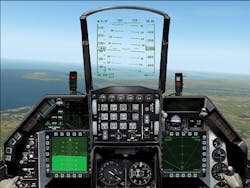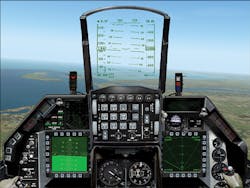Mercury to provide RF embedded computing for airborne EW training
RIDGECREST, Calif. - U.S. Navy electronic warfare (EW) experts needed specialized RF embedded computing modules for airborne EW training. They found their solution from the Mercury Systems Inc.'s Mercury Defense Systems subsidiary in Cypress, Calif.
Officials of the Naval Air Warfare Center Weapons Division at China Lake Naval Weapons Station in Ridgecrest, Calif., announced a $41.8 million, 5-year contract to Mercury for 200 miniaturized I/J band digital radio-frequency memory modulators (Mini DRFMs), as well as repairs and evaluations.
The Mini DRFM is a state-of-the-art electronic and radio frequency device that produces high-fidelity threat simulator systems for test and evaluation and training missions, Navy officials say.
Mercury Defense Systems, formerly KOR Electronics, designs and builds wideband and narrowband digital receivers and digital frequency discriminators (DFDs), which also are known as instantaneous frequency measurement devices (IFMs).
Mercury's DRFM designs include field-programmable gate arrays (FPGAs), analog-digital converters, high-speed interfaces and board design, signal processing techniques, Virtex-5 FPGAs, and VITA-41 (VXS) and VITA-46 interfaces, company officials say.
DRFM technology provides coherent time delay of RF signals in EW, radar, and other RF and microwave applications, and produces coherent deception jamming to a radar system. These devices enable users to replay captured radar pulses with a small delay, which can make false targets appear to move.
DRFMs can modulate captured radar pulse data in amplitude, frequency, and phase to provide other affects, such as adding Doppler shift so range and range rate trackers will correlate in the radar. Captured pulses also can be replayed many times to fool radar systems in seeing many targets.
DRFMs also can produce arbitrary waveforms from a file.
This contract calls for Mercury's mini DRFM technology, which involves smaller packages, faster responses, and vast volumes of low-latency compute power, company officials say.
FOR MORE INFORMATION visit Mercury Defense Systems online at www.mrcy.com/defense_systems.

